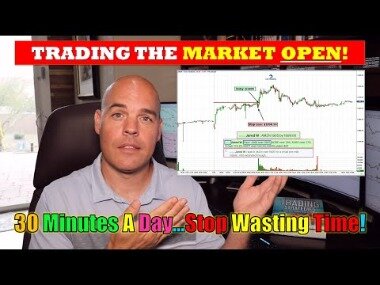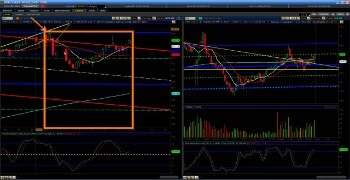Contents:


In fact, it acts as a continuation pattern more often than a reversal. The overall performance rank of 72 suggests that the trend after the breakout is a weak one. In fact, the bestperformance 10 days after the breakout is a drop of 4.01% in a bear market.
Harami Candlestick Patterns: A Trader’s Guide – DailyFX
Harami Candlestick Patterns: A Trader’s Guide.
Posted: Thu, 01 Aug 2019 07:00:00 GMT [source]
The second candle’s upper shadow is shorter than its lower shadow, and both shadows are contained within the range of price movement between open and close for the first candle. The small white candle should be at least 50% or more than half the size of the preceding red candle. To increase the accuracy, you can trade the Bearish Harami using pullbacks, moving averages, and other trading indicators.
How to Trade Forex Using the Bullish Harami Candlestick Pattern – Strategies and Examples
In this, you will be waiting for confirmation that the reversal will happen. Two candles of opposite colors doesn’t always mean a reversal. Lets say in a down trend, when P2 opens higher than P1’s close and closes higher than the P1’s open, it doesn’t come under any of the reversal patterns. In the trade examples shown above, we used the MACD indicator to identify instances where a market was losing momentum prior to the formation of a Harami candlestick pattern. This next chart shows the bullish version of the Harami forex pattern. In this example, the pattern formed right at the end of a bearish trend, before a strong bullish trend reversal.
- The Bullish Harami pattern is also a mirrored version of the Bearish Harami candlestick pattern.
- The best average move 10 days after the breakout is a rise of 4.05% in a bear market.
- Finally, if the harami did not convince you, a bullish engulfing pattern appeared that engulfed two candles.
- Although this is not a big amount, we should admit that this is a day trade, which took only a little more than 2 hour.
When evaluating online brokers, always consult the broker’s website. Commodity.com makes no warranty that its content will be accurate, timely, useful, or reliable. Mr. Pines has traded on the NYSE, CBOE and Pacific Stock Exchange.
Eventually, the trend reversal is confirmed and the price changes direction. The only difference is that the bearish harami pattern appears at the end of an uptrend and has the opposite outcome that the bullish harami setup. Here is a chart below where the encircled candles depict a bullish harami pattern, but it is not. The prior trend should be bearish, but in this case, the prior trend is almost flat, which prevents us from classifying this candlestick pattern as a bullish harami. A harami cross is a candlestick pattern that consists of a large candlestick followed by a doji. Harami is a type of Japanese candlestick pattern represented by two bodies, the first of them, larger, with black or red body and the second one, white or green.
Ideally, to increase the accuracy, we want to trade the Bearish Harami candlestick pattern by combining it with other types of technical analysis or indicators. Ideally, to increase the accuracy, we want to trade the Bullish Harami candlestick pattern by combining it with other types of technical analysis or indicators. In an engulfing pattern, the two candles should have opposite colors. Here I mean, in a bullish engulfing pattern the first candle is red and the second candle green. And, in a bearish engulfing pattern, the first candle is green, and the second one is red. Two sessions before the bullish harami pattern, there are a doji and an inverted hammer.
Bullish Harami: Definition in Trading and Other Patterns
The chart shows a bearish harami, circled in red, on the daily scale. This one appears in an upward price trend, as required. The first candle is a tall white one followed by a black candle with a smaller body. This bullish harami, circled in red, appears as a reversal in a short term downtrend. What strikes me first about this picture is the wonderful looking triple top chart pattern.

https://trading-market.org/ patterns mark the turning point of an existing trend and are good indicators for taking profit or reversing your position. Generally, trend reversal patterns indicate that a support level in a downtrend or a resistance level in an uptrend will hold and that the preexisting trend will start to reverse. These patterns allow you to enter early in the establishment of the new trend and usually result in very profitable trades. The bullish Harami appears at the end of bearish trends. It starts with a longer bearish candle, which fully engulfs the body of a following bullish candle. The bullish Harami candlestick indicates that this might be the end of the bearish trend.
TO BE A SUCCESSFUL TRADER?
In this relation, traders expect an upcoming bullish activity after the confirmation of the pattern. Thus, traders like to approach the bullish Harami setup with long trades. The bullish harami candlestick is a reversal structure but less potent than engulfing and piercing pattern. A bullish harami pattern is not as strong as a bullish engulfing candlestick pattern.
Key takeaways A morning star pattern is a bullish 3-bar reversal candlestick patternIt starts with a tall red candle,… Finally, it is crucial to use other analyses and indicators alongside the hamari cross pattern. Such a strategy is often an indicator for traders of a trend reversal. It tells them it would be valuable to do more analysis to purchase or sell their existing investment but will not always need action following the original indicator. If the trend is moving down and begins to switch with the Doji centered in the previous candlestick, it is considered a bullish pattern/reversal.
And here is another example where a bullish harami occurred, but the stoploss on the trade triggered a loss. The idea is to go long on the bullish harami formation. On day 2 of the pattern , the market opens at a price higher than the previous day’s close. On seeing a high opening price, the bears panic, as they would have otherwise expected a lower opening price. Strong reversals followed both the bullish and bearish Harami pattern examples above, reaching trade targets.
Pivot Points are automatic support and resistance levels calculated using math formulas. Depending on the strength of the trend, different levels are more likely to work better with the Bullish Harami pattern. The idea here is to trade pullbacks to the moving average when the price is on an uptrend. Moving averages are great trading indicators to trade trends.
Harami (candlestick pattern)
The bearish harami pattern appears at the top end of an uptrend, allowing the trader to initiate a short trade. The bullish harami indicator is charted as a long candlestick followed by a smaller body, referred to as a doji, that is completely contained within the vertical range of the previous body. To some, a line drawn around this pattern resembles a pregnant woman.
- Futures and forex trading contains substantial risk and is not for every investor.
- The candle that comes afterward is bullish and closes above the second Harami candle.
- Also the second candlestick is contained within the body of the first candlestick.
- On average markets printed 1 Harami pattern every 41 candles.
- The bearish Harami pattern has the opposite setup and functions compared to the bullish Harami.
The Bullish Harami candlestick pattern is formed by two candles. In a harami pattern, the first candle is taller than the second one. Conversely, in an engulfing pattern, the second candle is larger than the first one.
Strength of Harami and Engulfing patterns
On the other hand, the piercing pattern is a bullish pattern and this is almost the opposite of the dark cloud cover which has been mentioned previously. In this regard, we can commonly observe long red candles in a bear market. Just like on a normal bear market day it will be seen that prices opened lower when they are compared to the close of the previous day. However, bears often lose control and therefore the gap fills very quickly. When the bulls take control, price continues to increase.

This always happens at a highly opportune time in conjunction with a tight risk. Because of this early indication extremely valuable risk reward ratios will be available to traders. With the trade executed after the bullish harami candle pattern, there is not much more you need to do apart from managing the risk. The bullish harami pattern is a great indicator of a potential bullish reversal. It has an opposite version of the candlestick formation called a bearish harami pattern.
Types of Harami Candle Patterns
The complete opposite occurs in a bearish Harami pattern, when the first candle closes higher than its opening price, with a large green body. The second candle in the pattern opens at the first candle’s closing price, and has a red body that is contained within the body of the first. The bearish version of the Harami pattern tends to appear after a period of price rises. Analysts looking for fast ways to analyze daily market performance data will rely on patterns in candlestick charts to expedite understanding and decision-making. The Piercing pattern is a bullish trend reversal pattern that appears towards the end of an existing downtrend.

All ranks are out of 103 candlestick patterns with the top performer ranking 1. “Best” means the highest rated of the four combinations of bull/bear market, up/down breakouts. Generally, there are three differences between a bullish harami and a bullish engulfing pattern. The red candle of the harami with its preceding candle made a bearish engulfing pattern, which is more potent. However, because the opening price of the second candle is not the same as the closing price of the first candle, this pattern does not form in Forex and Crypto markets. The three black crows is a 3-bar bearish reversal patternThe pattern consists of 3 bearish candles opening above the…
Now you know the theory of a bullish harami formation, time to look at how to identify the formation. If the harami formation develops during an uptrend, this is a continuation signal. The absence of a real body after a strong move indicates that the previous trend is coming to an end, and a reversal may occur.
Bullish Harami: Definition in Trading and Other Patterns – Investopedia
Bullish Harami: Definition in Trading and Other Patterns.
Posted: Sun, 26 Mar 2017 00:36:12 GMT [source]
Alternatively, the bearish hamari occurs when the original trend and candlestick are upward, and doji is fully contained by the previous candlestick, hinting at a bearish reversal. Depending on where the trend is moving, the pattern can signal either a bullish or bearish reversal. A Harami candlestick is one of the several types of Japanese candlestick patterns. The name harami comes from the Japanese word for pregnant.

